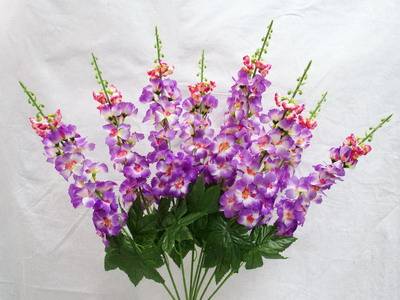Asters come in a great variety of colors including red, white, orange and various shades of pink and purple, these are usually used in flower arrangements due to the fact that they come in so many colors. Asters are also known to attract many butterflies so if you love butterflies make sure to add these beauties to your ever growing garden.
How to take care of/grow
- Make sure to plant your Asters in a full to partial well lit area.
- The soil needs to be moist but well drained. Asters need a lot of water during the Summer. If you see some flowers falling change up your watering method because that's a sign of stress.
- Add a thin layer of mulch around the plants every Spring.
- Make sure to stake your tall plants to encourage growth.
- Cut flowers back in during Winter after the foliage has died.
I hope this helps with all your Aster needs!






























